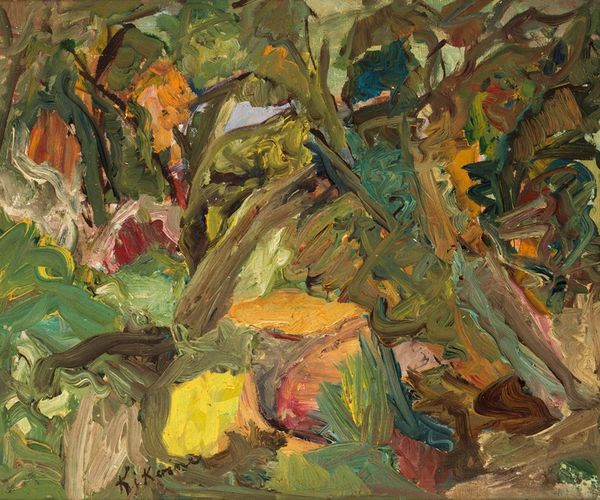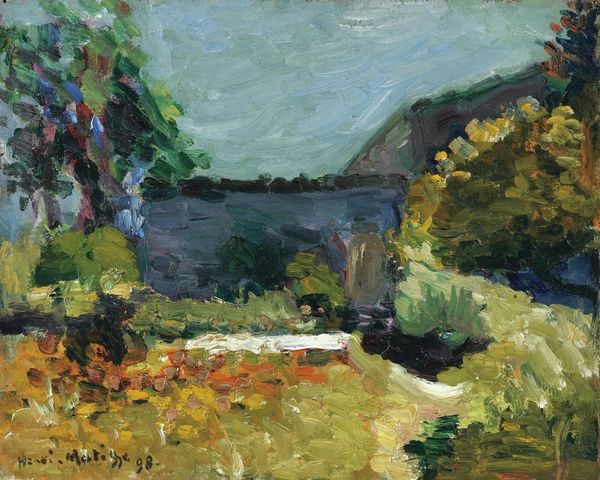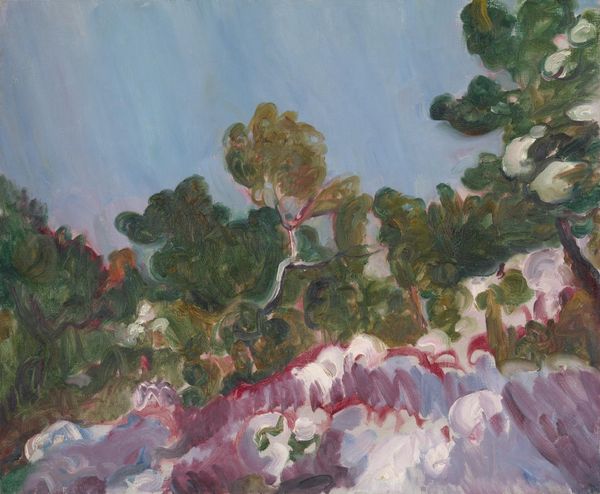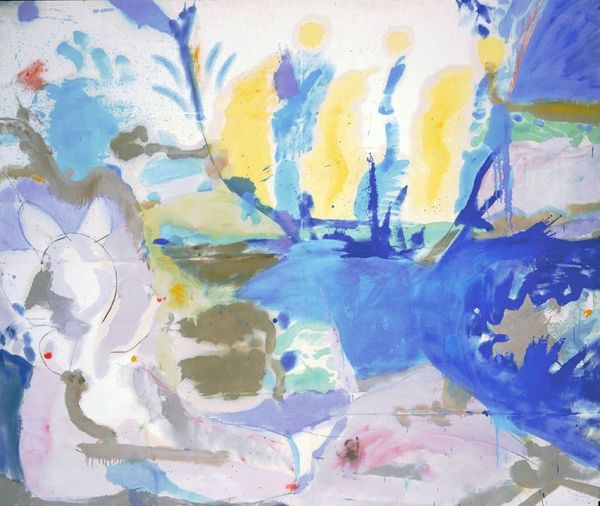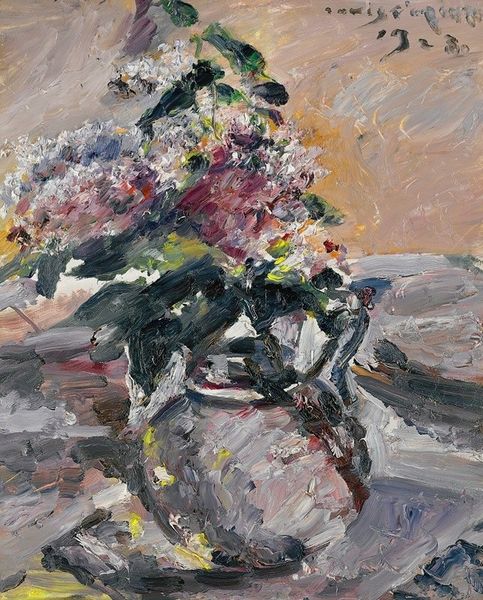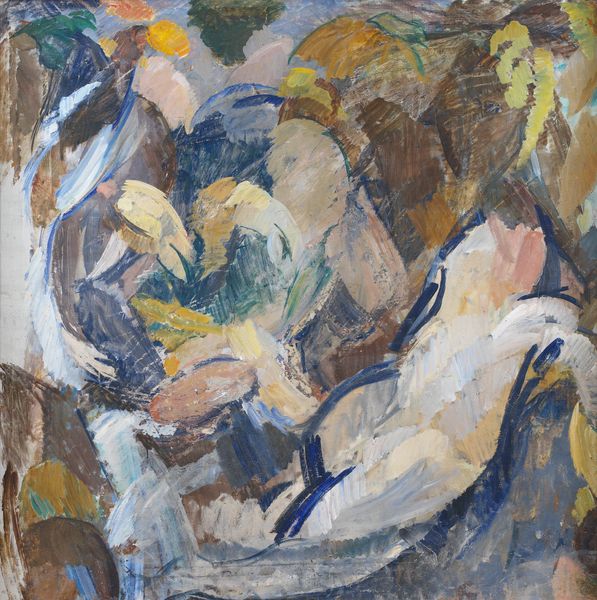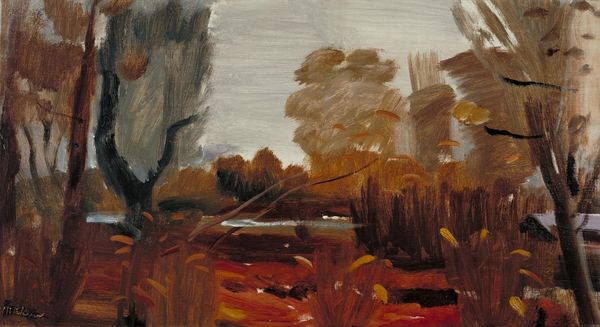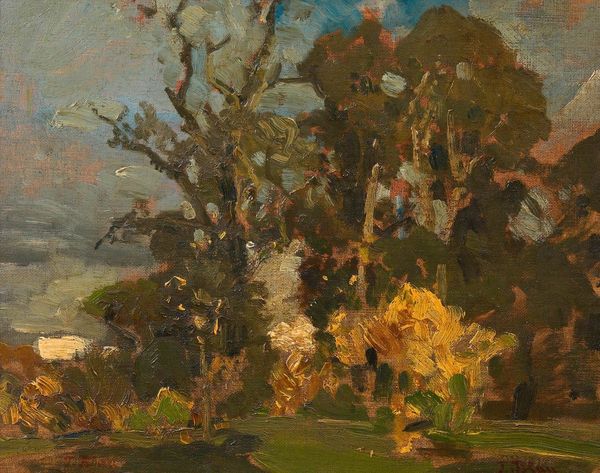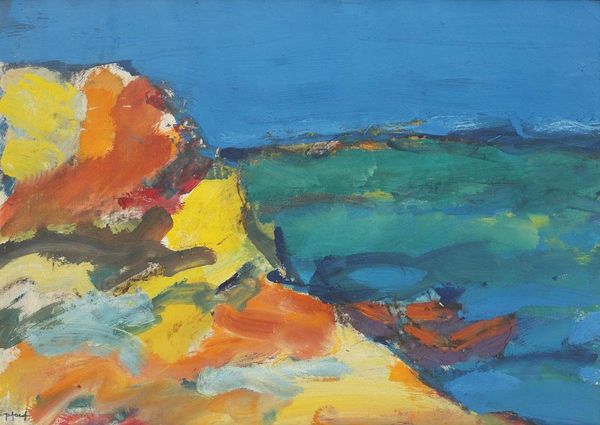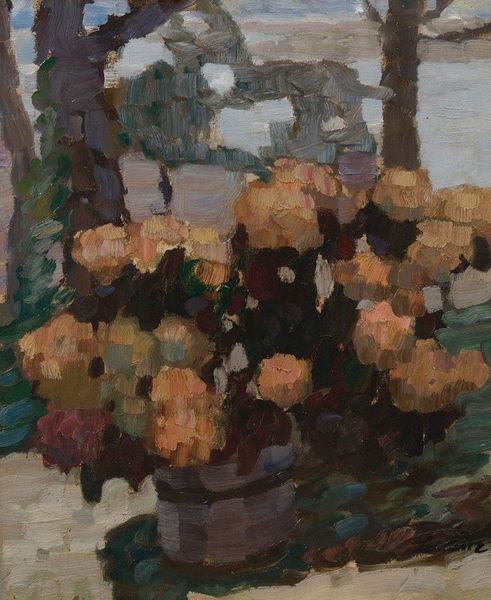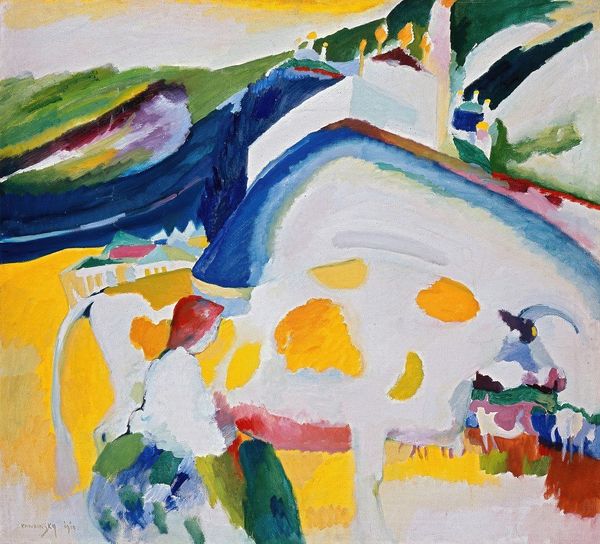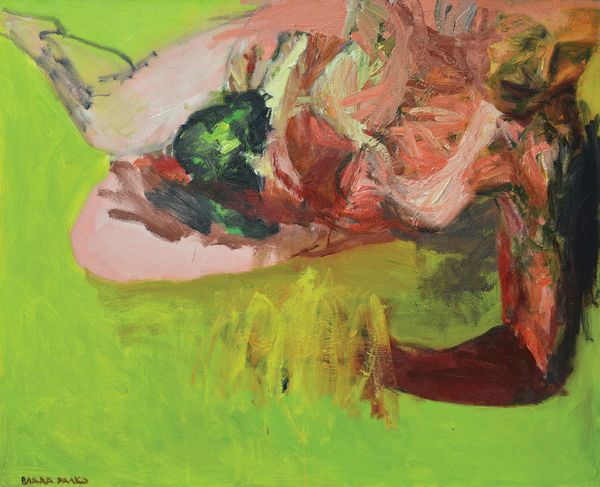
oil-paint
#
abstract-expressionism
#
abstract expressionism
#
abstract painting
#
oil-paint
#
landscape
#
oil painting
#
bay-area-figurative-movement
#
abstraction
#
modernism
Copyright: Elmer Bischoff,Fair Use
Curator: Let’s consider Elmer Bischoff’s "Bay," completed in 1960, rendered in oil paint. Its vibrant color scheme immediately suggests a landscape. Editor: Indeed, my immediate impression is one of melancholic beauty. The deep blues contrasting with the brighter yellows evoke a poignant atmosphere. The thickness of the application only emphasizes this somber quality, doesn’t it? Curator: Absolutely. The texture and color palette create a captivating visual dynamic. Bischoff's work at this time represented a critical moment in Bay Area Figurative Painting. We observe his commitment to representing recognizable subject matter—landscape, figure—within an abstract vocabulary. Editor: Precisely! By embedding fragments of reality into the abstract, Bischoff engages in a play of visibility and concealment. In terms of its social context, this method reflects a postwar cultural anxiety, perhaps a subtle acknowledgement that conventional representation was no longer capable of fully addressing modern complexities. How interesting! Curator: One could even see this ambiguity reflected in the composition, with layered brushstrokes obscuring concrete forms and the absence of distinct lines dissolving conventional pictorial space. Consider, for instance, the interplay between yellow and blue which pushes and pulls our sense of spatial relations. Editor: Yes, that contrast of hue contributes to its ambiguous perspective. And viewed within the development of Abstract Expressionism, "Bay" stands out, resisting the absolute denial of the representational in favor of suggestive visual echoes of recognizable scenery. Curator: Agreed. The title, “Bay,” suggests that this artwork does capture a memory or perception filtered through the artist’s sensibilities. His emotional state becomes palpable. Editor: The expressive materiality in conjunction with the subject offers us an insight into how this bridges the gap between external reality and inner emotion. This reminds us about the role paintings hold as visual records of their time, with all of its cultural and philosophical dimensions on display. Curator: So well articulated, that brings us full circle! Editor: Wonderful! It is stimulating how the aesthetic language invites us to view beyond mere representation and think in deeper cultural implications.
Comments
No comments
Be the first to comment and join the conversation on the ultimate creative platform.

